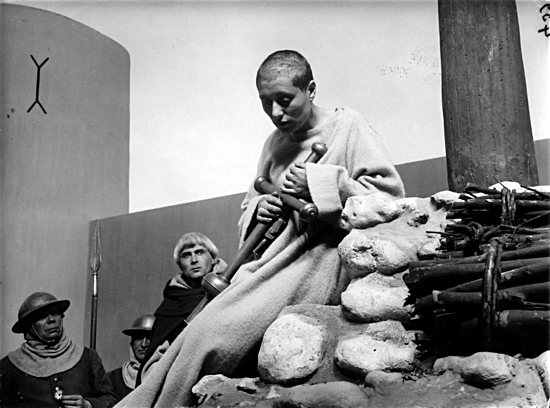
Choir and orchestra to enhance drama of classic silent film at Cathedral, Basilica
In 1899, Archbishop John Ireland preached in the cathedral of Orleans, France. A guest of the French government, he commemorated the 470th anniversary of the English’s raising of the Siege of Orleans, a French victory long credited to the actions of a 17-year-old peasant girl-turned-military leader, Joan of Arc.
The Archbishop of St. Paul recounted not only her virtues, especially patriotism, but also his deep affection for the yet-to-be-canonized saint, as he had learned her story as a young seminarian studying in France.
It seems especially fitting, then, that the Maid of Orleans is the focus of a unique visual and musical production to be held in April in the co-cathedrals the archbishop commissioned. Presented by the Oratorio Society of Minnesota, “Voices of Light: The Passion of Joan of Arc” combines Carl Dreyer’s iconic 1928 silent film with the 1994 choral music of Richard Einhorn. The productions are 8 p.m. April 15 at the Cathedral of St. Paul in St. Paul, and April 22 at the Basilica of St. Mary in Minneapolis.
Joan of Arc (1412-1431) figures prominently in 15th-century French history when France and England were embroiled in the Hundred Years’ War. She was a mystic who reported visions, including those of Sts. Michael the Archangel, Catherine of Alexandria and Margaret of Antioch. The saints urged Joan to live a pious life and to lead France in retaking the crown from England. In 1429, she convinced Charles, the French dauphin, to let her fight. She was at his side two months later when he was crowned.
The following year, French and English collaborators captured Joan during battle. When Charles VII turned his back on her, Joan was tried on several charges, including heresy and dressing like a man. In 1431, she was burned at the stake in Rouen, France. In 1456, Joan was retried and found innocent, and named a martyr. She was beatified in 1909, and in 1920, the Church canonized her and named her patroness of France.
Music modern yet ancient
St. Joan’s canonization sparked renewed interest in her life and place in French history.
In 1928, Carl Dreyer, a Danish silent film director, produced “The Passion of Joan of Arc,” based on the historical record of Joan’s trial. The film is widely considered a masterpiece of its genre.
Matthew Mehaffey, artistic director of the St. Paul-based Oratorio Society of Minnesota and professor of music at the University of Minnesota, said the movie was once thought to be lost. But in the 1980s, the film was found and restored. Then, in 1994, Richard Einhorn, a young American composer, saw the film in a museum.
David Fielding, the Oratorio Society programming administrator and a choir member, added that Einhorn thought music would make the film more relevant to contemporary audiences. He felt compelled to compose “Voices of Light” in a matter of months.
“I can hear things, just in the types of note combinations that he uses, that sound like 14th-century French music,” Mehaffey said. “At the same time, [Einhorn] uses what I would say is a more modern style. The 20th-century term would be ‘minimalist.’ He takes a very small pattern and repeats it many times, slightly altering one note or one rhythm that kind of suspends time for the listener and kind of makes it hard to place it into a historical time period. Even though it’s modern, it kind of feels ancient.”
Einhorn composed the work in Latin and French for choir, soloists and orchestra. Fielding said it has been performed internationally hundreds of times, leaving audiences profoundly moved.
Because an important aspect of any production is the ambiance and audience experience, Mehaffey and Fielding explored several venues and chose the co-cathedrals. Both parishes work at forming community partnerships, a philosophy shared by the Oratorio Society. Emmanuel Louis Masqueray, a French architect, designed both buildings.
The Cathedral of St. Paul also has a physical tie to St. Joan of Arc: a stone from the Castle of Rouen, where she was imprisoned.
Mehaffey explained, “The style of the music is ideal in [the churches’] acoustics. Soaring parts, the monophonic chants, will sound absolutely right in these spaces.”
The Oratorio Society’s choir consists of 90 volunteer voices. The organization has hired some musicians for the production as well as audio-visual professionals. Large screens will be erected in the sanctuaries. The spaces will be lit only by the movie images.
“The orchestra and the singers will be behind curtains,” Mehaffey explained. “It will be as if the building is singing to the people.”
For ticket information, visit oratorio.org.



